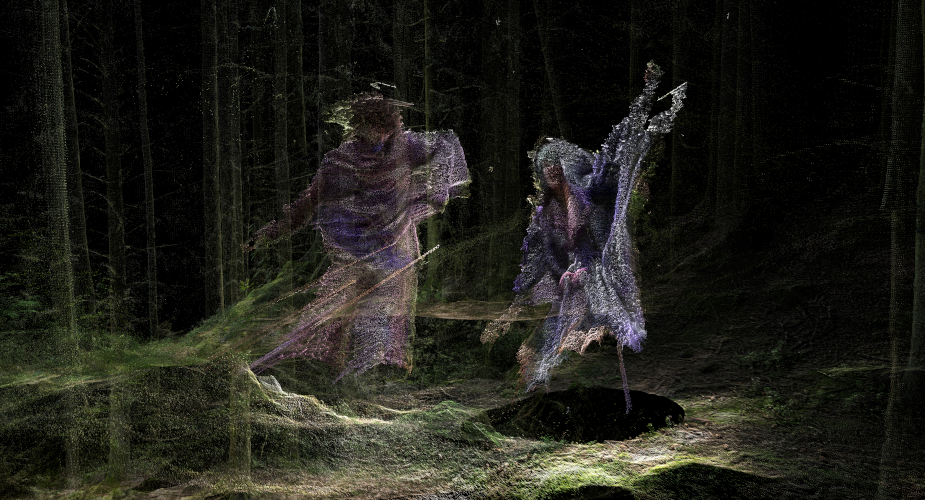
Brace Yourself for Super Convergence – It’s Going to Change the Digital Universe

Are you ready for super convergence? Because it’s coming – and thanks to the global pandemic, which has torn through the high street and changed the way we live – it’s coming faster than we might have imagined. Thankfully, to navigate this wave of change, Cult Futures: The Creatology Report explores everything you need to know about it in its third and final chapter.
Charlotte Bunyan, head of strategy at the agency defines super convergence as fully integrated social commerce. She adds: “It’s a combination of ecommerce platforms combined with online gaming or gamification combined with social platforms and social engagement.” In short, this new digital universe merges the best parts of social media, music, shopping and entertainment together in one hyper-connected place, which Charlotte believes gives a more holistic experience for consumers.
To understand what this means, take a look at what’s happening in gaming right now. It’s a sector that is huge in its own right, but now gaming platforms and developers are exploring new ways to connect and even merge with brands and businesses in different industries. During lockdown, for example, Fortnite has become a virtual social hangout spot for teens – and it’s also a place where Hollywood movies have chosen to debut film trailers and musicians are hosting live gigs.

Luxury brands are no strangers to the gaming world - but their collaborations are becoming more sophisticated and multiplatform. In particular British brand Burberry introduced B Bounce last year, a video game that can be played in store or online. To ensure that fashion is still at the forefront of the gaming experience, gamers have the ability to customise digital versions of the brand’s monogrammed puffer jackets for their characters as they compete in a race to the moon. This mesh between digital uniforms and fashion has also been explored by Louis Vuitton for League of Legends and more recently between Net-A-Porter and Animal Crossing. Charlotte notes that at first these partnerships may seem incongruous, but they are smart a move, as it enables both brands to broaden their reach and engage with a new demographic.
Emerging platforms Drest and Ada have spotted an opportunity in the market. With the understanding that 50% of gamers are women and that the ‘typical’ gamer is style-conscious, they have created competitions to style avatars with virtual versions of physical clothing collections. It’s important to note that these brands first came onto the scene as ‘gaming-meets-fashion’ apps, so not only do they standout in the retail sector, but they help solve one of fashion’s biggest problems with the return culture it has become infamous for. New York-based start-up Obsess took this one step further by creating an e-commerce experiences that blends augmented reality and VR software. Store fronts range from game-like stage sets to fish tanks to digital rooftop pool parties, and are navigable just like computer games – as well as being shoppable.
Smoothing out the path to purchase and the removal of ‘friction’ in e-commerce has been dubbed ‘Platform Commerce 2.0’ by Cult and is, as Charlotte believes, a standout section in the report. In particular, major media platforms are now betting on emerging technologies like AR and virtual experiences to condense experiences that previously could only be accessed by a single brand, retailer, or app. With this in mind, last year saw YouTube try out AR try-on sessions as a way for audiences to interact with products beauty bloggers were promoting. Designer Robert Cooper tells Cult that this may be a completely new way to monetise the beauty industry and could completely reshape the business models that traditional make-up manufacturers are built on.

This rise in virtual and augmented reality as forms of shopping has been seen in sectors from homeware to automotive, and even in some cases as means of viewing homes. With the pandemic being the driving force in so many of these new modes of engaging consumers, Charlotte believes that the past few months have given brands plenty to think about when it comes to being present on social channels, customer service and virtual retail experiences. She continues, “we’re seeing an uplift in people’s desire to use ecommerce more, particularly in older demographics. There’s an appetite from consumers to try something new, so why not as a brand, run some trials”. Within the last few months, beauty brands Farmacy and Trestique have done just that and used the sudden popularity in Zoom and online conferencing to replacing in-store events for fans and media with Zoom happy hours, product demonstrations and Q&A.
With these sudden changes – and many more to come - now is the time for brands and marketers to get their heads around what super convergence has to offer. With the likes of Samsung creating televisions designed specifically for viewing Instagram and Tik Tok videos, social, entertainment and shopping are going to become ever-more closely intertwined.
So, what do the experts at Cult recommend doing now? “Take a hard look at what your brand is doing and where it should be showing up for your consumers. Buying is transactional, shopping is an experience. Brands are competing for people’s restricted wallets and buying power and people are being more conscious and cautionary about where they spend their money”. As new platforms emerge and converge, it may seem that keeping up with consumer behaviour is an intimidating task, but Charlotte’s advice is to embrace the unknown. With research she believes it’s possible to find out where audiences – and future audiences – are spending their time and then incorporate brands in those spaces in a meaningful way.










